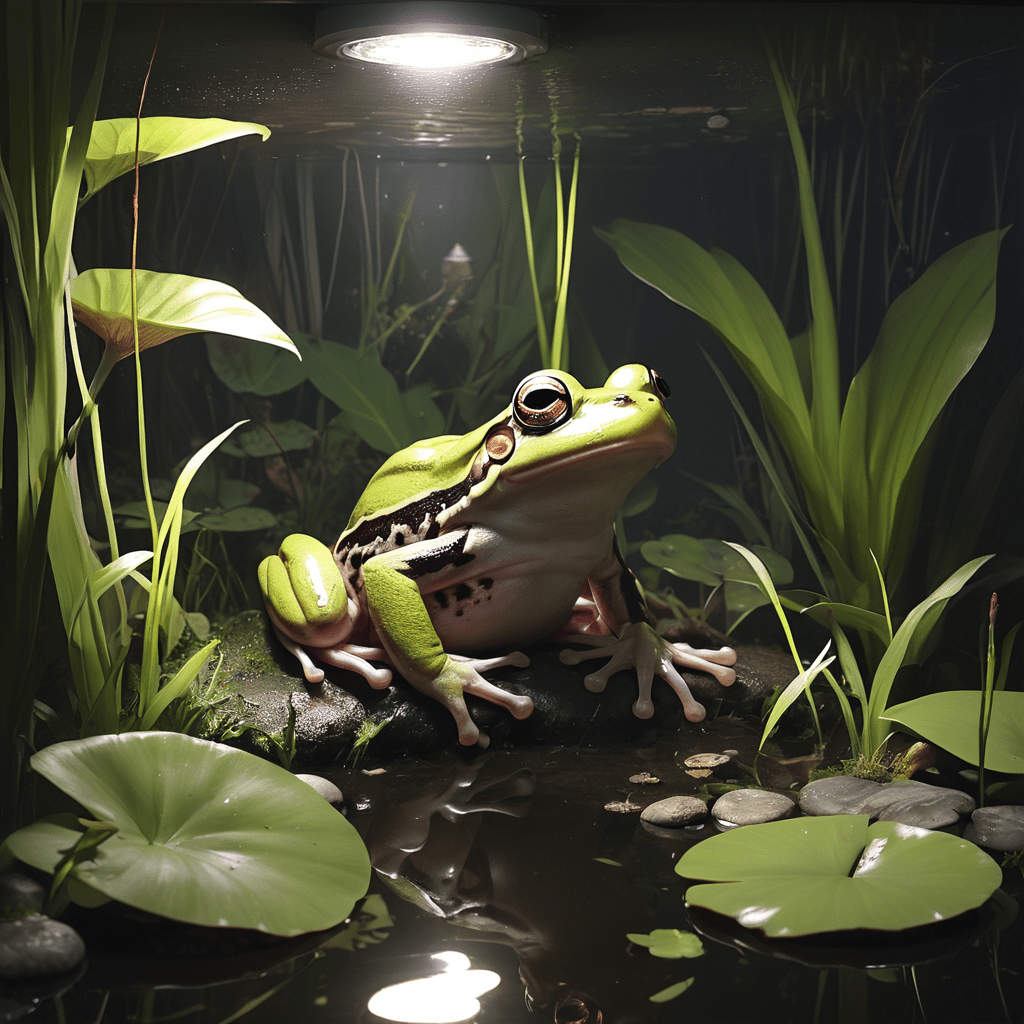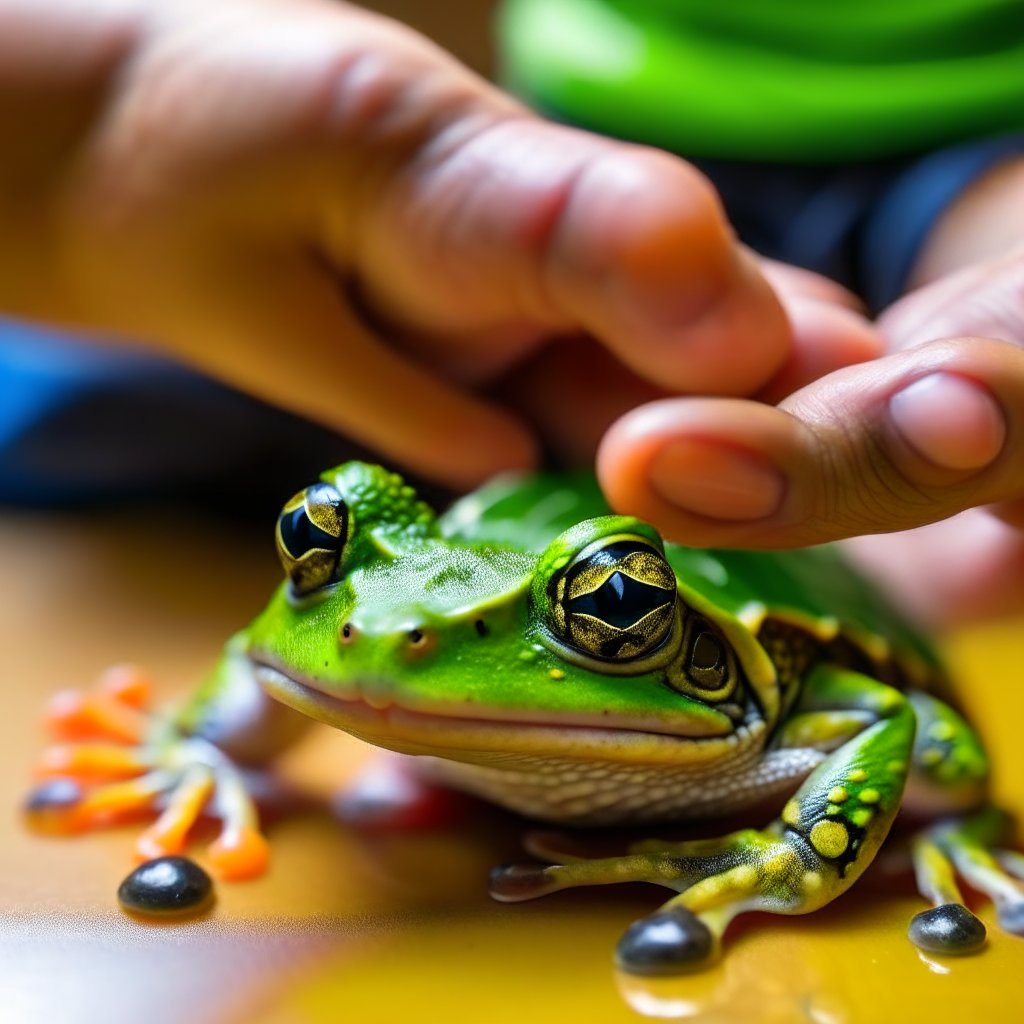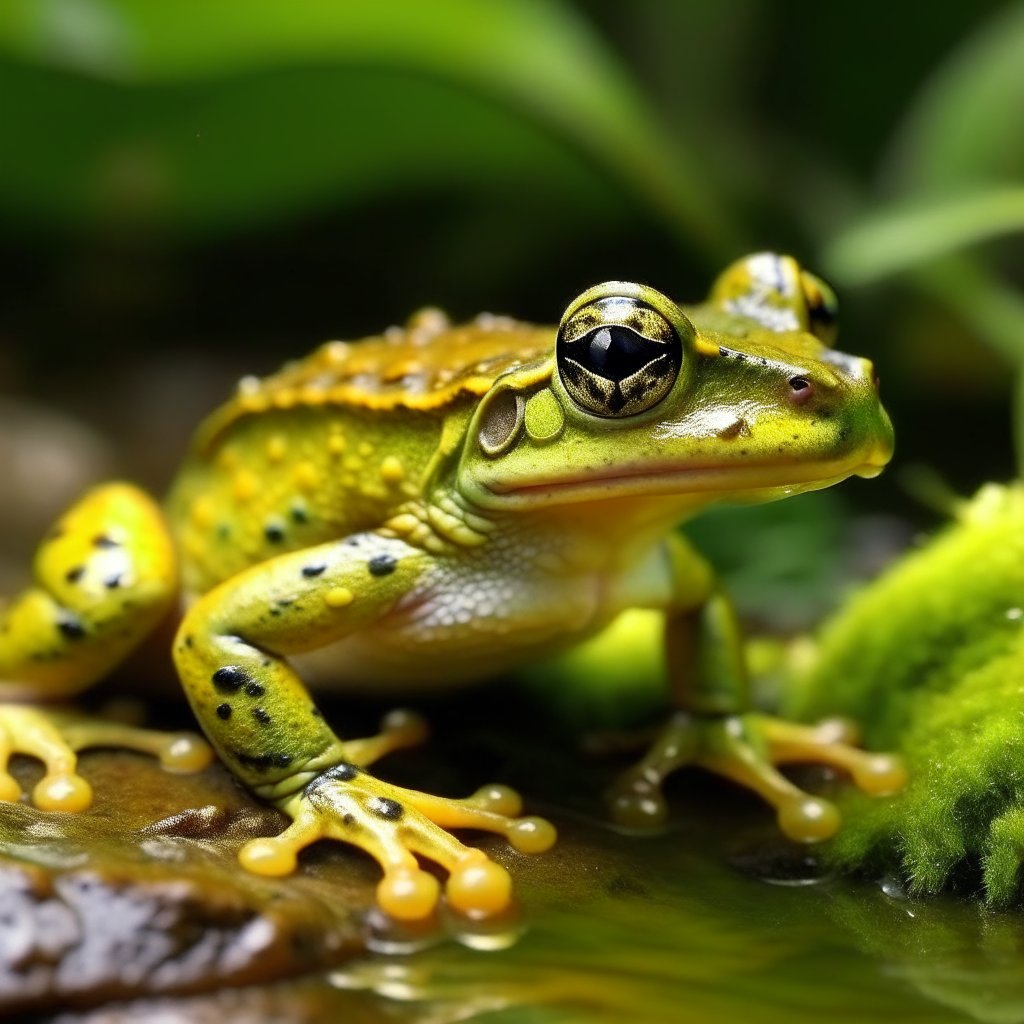Best frogs for pets When you think of pets, furry friends like dogs and cuddly cats may immediately come to mind. But what if I told you that the perfect pet could be a hop away from your preconceived notions?
Yes, I’m talking about frogs! Contrary to popular belief, frogs can make excellent companions, offering unique joys and benefits that might surprise you.
In this comprehensive guide, we’ll delve into the fascinating world of pet frogs, exploring the best species for beginners,
the essentials of frog care, and why these amphibians deserve a place in your heart and home.
Understanding Pet Frogs: Why They’re Simply Ribbiting!
Frogs have long been misunderstood creatures, often relegated to the realms of ponds and wetlands in our collective consciousness. However, these remarkable amphibians have much more to offer than meets the eye. Imagine having a tiny, vibrant frog perched in a terrarium, bringing a splash of color and life to your living space.
From their mesmerizing croaks to their graceful leaps, frogs possess an undeniable charm that captivates enthusiasts of all ages.
When it comes to choosing a pet frog, the options are as diverse as the ecosystems they inhabit. From the vibrant hues
best frogs for pets of dart frogs to the endearing antics of tree frogs, there’s a species to suit every personality and preference.
Whether you’re a novice frog owner or an experienced enthusiast, understanding the unique characteristics and care
requirements of each species is essential for providing a thriving environment for your amphibious friend.

Types of Pet Frogs: Exploring the Rainbow of Amphibian Diversity
When venturing into the world of pet frogs, it’s essential to familiarize yourself with the different species available in the market.
Each type of frog comes with its own set of traits, from size and coloration to habitat preferences and dietary needs. Let’s take a closer look at some popular pet frog species, along with their distinguishing features and suitability for captivity.
Dart Frogs: Vibrant Jewels of the Rainforest
Dart frogs, also known as poison dart frogs, are renowned for their dazzling array of colors and intricate patterns. Despite their small size, these frogs pack a punch with their vibrant hues, warning predators of their toxic skin secretions.
While their toxicity may make them unsuitable for handling, dart frogs thrive in well-maintained terrariums, where their striking appearance can be admired from a safe distance.
White’s Tree Frogs: The Charming Green Giants
With their plump bodies and endearing smiles, White’s tree frogs have earned a reputation as one of the most popular pet frog species. These robust amphibians are known for their docile nature and hearty appetites, making them an excellent choice for beginners.
White’s tree frogs are arboreal by nature, preferring to spend their days lounging in the branches of tall enclosures, where they can observe their surroundings with a watchful eye.
African Clawed Frogs: Aquatic Wonders of the Tank
African clawed frogs, also known as African dwarf frogs, are unique among pet frogs for their aquatic lifestyle. These amphibians are fully aquatic, meaning they spend their entire lives submerged in water.
With their webbed feet and streamlined bodies, African clawed frogs are expert swimmers, gliding gracefully through the depths of their tank.
Their peaceful demeanor and low-maintenance care requirements make them an ideal choice for beginner aquarists looking to add a touch of amphibian charm to their underwater world.
Pacman Frogs: The Voracious Bottom Dwellers
Named for their wide mouths and insatiable appetites, Pacman frogs are known for their voracious appetite and distinctive appearance. These stout-bodied amphibians earned their moniker due to their resemblance to the classic
best frogs for pets video game character, with a gaping mouth that seems ready to devour anything in its path.
Pacman frogs are terrestrial by nature, preferring to burrow into the substrate of their enclosure and ambush unsuspecting prey with lightning-fast strikes.
Fire-bellied Toads: Delightful Dancers of the Water’s Edge
Fire-bellied toads are charming amphibians known for their bright green bodies and vibrant orange or red bellies. These semi-aquatic frogs thrive in environments that offer a combination of land and water, allowing them to bask in the sun
and take refreshing dips as needed. Fire-bellied toads are social creatures that can be kept in groups, making them an excellent choice for communal setups.

Best Pet Frogs for Beginners: Hopping Into Frog Ownership with Ease
Are you ready to take the leap into the world of frog ownership but unsure where to start? Fear not! In this section, we’ll
introduce you to some of the best pet frogs for beginners, perfect for those new to amphibian companionship.
From their docile demeanor to their low-maintenance care requirements, these frog species are ideal for novice owners looking to dip their toes into the fascinating hobby of frog keeping best frogs for pets.
White’s Tree Frogs: The Perfect Starter Frog
If you’re new to frog ownership, White’s tree frogs are an excellent choice to begin your journey. These charming amphibians are renowned for their friendly disposition and relaxed demeanor, making them ideal companions for first-time frog owners.
With their distinctive green coloration and endearing smiles, White’s tree frogs are sure to capture your heart from the moment you set eyes on them.
One of the greatest advantages of White’s tree frogs is their adaptability to a wide range of environments. Whether you choose to set up a lush rainforest-themed terrarium or a simple, minimalist enclosure, these frogs will thrive in almost any setup.
As arboreal creatures, White’s tree frogs prefer tall enclosures with plenty of branches and foliage to climb and explore. Providing a variety of hiding spots and perches will allow your tree frogs to feel secure and comfortable in their new home.
When it comes to diet, White’s tree frogs are relatively easy to please. They have hearty appetites and will eagerly devour a variety of live insects, such as crickets, mealworms, and roaches. Supplementing their diet with vitamin and mineral supplements will ensure that they receive all the nutrients they need to thrive.
With proper care and attention, White’s tree frogs can live for up to 15 years or more, bringing joy and companionship to your life for many years to come.
African Clawed Frogs: Aquatic Delights for Beginner Aquarists
If you’re more inclined towards aquatic pets, African clawed frogs are an excellent choice for beginner aquarists. These fascinating amphibians are fully aquatic, meaning they spend their entire lives submerged in water.
With their webbed feet and streamlined bodies, African clawed frogs are expert swimmers, gliding gracefully through best frogs for pets the depths of their tank with ease.
One of the key advantages of African clawed frogs is their low-maintenance care requirements. Unlike many other frog species, African clawed frogs do not require a terrestrial area in their enclosure, making setup and maintenance a breeze.
A simple aquarium with a filtration system and regular water changes is all that’s needed to keep your African clawed frog happy and healthy.
When it comes to feeding, African clawed frogs are opportunistic feeders, meaning they will eat almost anything that moves. A diet of live or frozen foods, such as bloodworms, brine shrimp, and earthworms, will provide your frog with the nutrition it needs to thrive. However, it’s essential to monitor your frog’s diet and avoid overfeeding, as obesity can be a concern in captive frogs.
In addition to their ease of care, African clawed frogs are also fascinating creatures to observe. From their graceful swimming to their unique feeding behavior, these aquatic wonders are sure to provide endless entertainment for you and your family.
With their peaceful demeanor and fascinating biology, African clawed frogs are an excellent choice for beginner aquarists looking to add a touch of amphibian charm to their underwater world.
Pacman Frogs: The Voracious Bottom Dwellers
For those looking for a more hands-off approach to frog ownership, Pacman frogs are an excellent choice. These stout-bodied amphibians are known for their voracious appetite and distinctive appearance, with wide mouths that seem ready to devour anything in their path.
Pacman frogs are terrestrial by nature, preferring to burrow into the substrate of their enclosure and ambush unsuspecting prey with lightning-fast strikes.
One of the greatest advantages of Pacman frogs is their low activity level, making them ideal for busy individuals or those with limited space.

Unlike some other frog species that require ample space to climb and explore, Pacman frogs are content to spend most of their time hiding and waiting for food to come to them. This sedentary lifestyle makes them relatively low maintenance compared to other frog species, requiring minimal interaction from their owners.
When it comes to feeding, Pacman frogs are not picky eaters and will eagerly consume a variety of live prey, including crickets, roaches, and worms.
However, it’s essential to provide a varied diet and avoid feeding them large prey items that could pose a choking hazard.
With proper care and attention, Pacman frogs can live for up to 10 years or more, bringing joy and fascination to your life for many years to come.
Exotic and Unique Frog Species: Discovering the Extraordinary World of Amphibian Diversity
Are you ready to venture beyond the ordinary and explore the extraordinary world of exotic and unique frog species? In this section, we’ll take a deep dive into the captivating realm of amphibian diversity, introducing you to some of the most fascinating and unusual frogs found in the pet trade.
best frogs for pets From their striking colors to their intriguing behaviors, these exotic frogs are sure to leave you spellbound with their beauty and charm.
Dart Frogs: Jewels of the Rainforest
First on our list of exotic frog species are the renowned dart frogs, also known as poison dart frogs. These dazzling amphibians are native to the tropical rainforests of Central and South America, where they dazzle observers with their vibrant colors and intricate patterns.
Despite their small size, dart frogs are among the most colorful creatures on the planet, boasting a stunning array of hues ranging from electric blues and fiery oranges to deep blacks and velvety purples.
One of the most remarkable features of dart frogs is their potent skin toxins, which they use as a defense mechanism against predators in the wild. While these toxins are harmless in captivity, they give dart frogs an unmistakable air of mystery and intrigue.
In addition to their striking appearance, dart frogs are also known for their complex social behaviors, making them fascinating subjects for observation and study.
When it comes to care, dart frogs require specific habitat conditions to thrive, including high humidity levels and ample hiding spots.
A well-planted terrarium with plenty of foliage and climbing structures will provide your dart frogs with the ideal environment to explore and inhabit.
Red-eyed Tree Frogs: Symbols of the Tropical Rainforest
Next up, we have the iconic red-eyed tree frog, a symbol of the lush tropical rainforests of Central and South America. With their vibrant green bodies, contrasting red eyes, and iconic blue and yellow markings, red-eyed tree frogs are among the most recognizable frog species in the world.
These arboreal amphibians spend their days lounging in the canopy of the rainforest, where they bask in the warmth of the sun and hunt for insects under the cover of darkness.
In addition to their striking appearance, red-eyed tree frogs are also known for their unique vocalizations, which they
use to communicate with one another and establish territory. Their distinctive “chuck” calls can be heard echoing
through the rainforest at night, creating a symphony of sound that adds to the magical ambiance of the jungle.
When it comes to care, red-eyed tree frogs require a spacious terrarium with plenty of vertical space for climbing and
ample foliage for hiding. A shallow water dish should be provided for drinking and bathing, as red-eyed tree frogs
require high humidity levels to thrive.

Native Frog Species Suitable for Captivity: Bringing the Wilderness into Your Home
Are you intrigued by the idea of creating a slice of the wilderness within the confines of your home? Look no further than native frog species, perfectly suited for captivity and ready to bring a touch of the wild into your living space.
In this section, we’ll explore some native frog species that thrive in captivity, allowing you to experience the wonders of nature up close and personal.
American Green Tree Frog: A Symbol of Southern Charm
First on our list of native frog species suitable for captivity is the American green tree frog. Found throughout the
southeastern United States, from Florida to Texas, these charming amphibians are beloved for their bright green
best frogs for pets coloration and endearing vocalizations.
With their large, expressive eyes and slender bodies, American green tree frogs exude a sense of Southern charm that
captivates enthusiasts of all ages.
In addition to their attractive appearance, American green tree frogs are relatively easy to care for, making them an
ideal choice for beginner frog keepers. These arboreal amphibians thrive in tall enclosures with plenty of climbing structures and foliage to explore.
Northern Leopard Frog: A Spotted Beauty of the North
Next up, we have the Northern leopard frog, a striking amphibian found throughout North America, from the Great Lakes
region to the northern reaches of Canada.
Named for its distinctive leopard-like spots and markings, this frog species is a sight to behold in both the wild and captivity.
When it comes to care, Northern leopard frogs require a spacious tank with ample swimming space and hiding spots. These semi-aquatic frogs enjoy basking on land and exploring the depths of their aquatic environment, so a
combination of land and water features is essential for their well-being. Feeding Northern leopard frogs is relatively
straightforward, as they have hearty appetites and will eagerly consume a variety of live prey, including insects, worms,
and small fish.
Feeding and Nutrition: Nourishing Your Frogs for Optimal Health and Vitality
Feeding your pet frogs a balanced and nutritious diet is essential for their overall health and well-being. In this section,
we’ll explore the dietary needs of frogs and provide expert tips for feeding and nutrition to ensure your amphibious
companions thrive in captivity.
1. Understanding Frog Dietary Needs:
Frogs are carnivorous creatures with specific dietary requirements tailored to their natural feeding behaviors. Depending on the species, frogs typically consume a variety of live prey, including insects, worms, and small vertebrates. It’s essential to research the specific dietary needs of your frog species to ensure they receive the nutrients
they need to thrive.
Selecting Suitable Prey Items:
When it comes to feeding your frogs, it’s crucial to offer a varied diet that includes a range of prey items to meet their
best frogs for pets nutritional needs. Some common prey items suitable for frogs include:
Crickets: Crickets are a staple food for many frog species and are readily available at pet stores. They provide essential nutrients such as protein and calcium.
Mealworms: Mealworms are another popular prey item for frogs and are rich in protein and fat. However, they should be fed in moderation due to their high-fat content.
Dubia Roaches: Dubia roaches are an excellent alternative to crickets and mealworms and are low in fat, making them
suitable for regular feeding.
It’s essential to gut-load prey items before feeding them to your frogs to ensure they receive essential vitamins and minerals. Gut-loading involves feeding the prey items a nutritious diet, such as fruits, vegetables, and commercial gut-
loading supplements, before offering them to your frogs.

Conclusion
Embarking on a Frog-Keeping Adventure
As we reach the conclusion of our journey into the enchanting world of frog keeping, it’s time to reflect on the wonders
we’ve explored and the knowledge we’ve gained. From selecting the perfect frog companion to creating a thriving
habitat filled with lush foliage and tranquil water features, frog keeping offers a unique opportunity to connect with
nature and experience the beauty of the wilderness from the comfort of your own home.
best frogs for pets Throughout this guide, we’ve delved into the diverse array of frog species available to enthusiasts, from the charming
White’s tree frog to the exotic dart frog and the native American green tree frog. Each species brings its own unique charm and personality to the table, offering endless opportunities for observation, interaction, and enjoyment.
We’ve also discussed the essential elements of frog care, including habitat setup, feeding and nutrition, lighting and
heating, and monitoring humidity and air quality. By providing a safe, comfortable environment and meeting their
specific dietary and environmental needs, you can ensure your amphibious companions thrive and flourish in captivity.
As you embark on your frog-keeping adventure, remember that patience, dedication, and a genuine love for these
fascinating creatures are key to success. Take the time to observe and bond with your frogs, learn from their behaviors,
and marvel at the intricacies of their natural world best frogs for pets.
Whether you’re a seasoned frog keeper or a newcomer to the hobby, the joys of frog keeping are boundless. From the
soothing sound of croaking choruses to the vibrant colors of dart frogs and the graceful movements of tree frogs, each
moment spent with these remarkable creatures is a treasure to be cherished.












